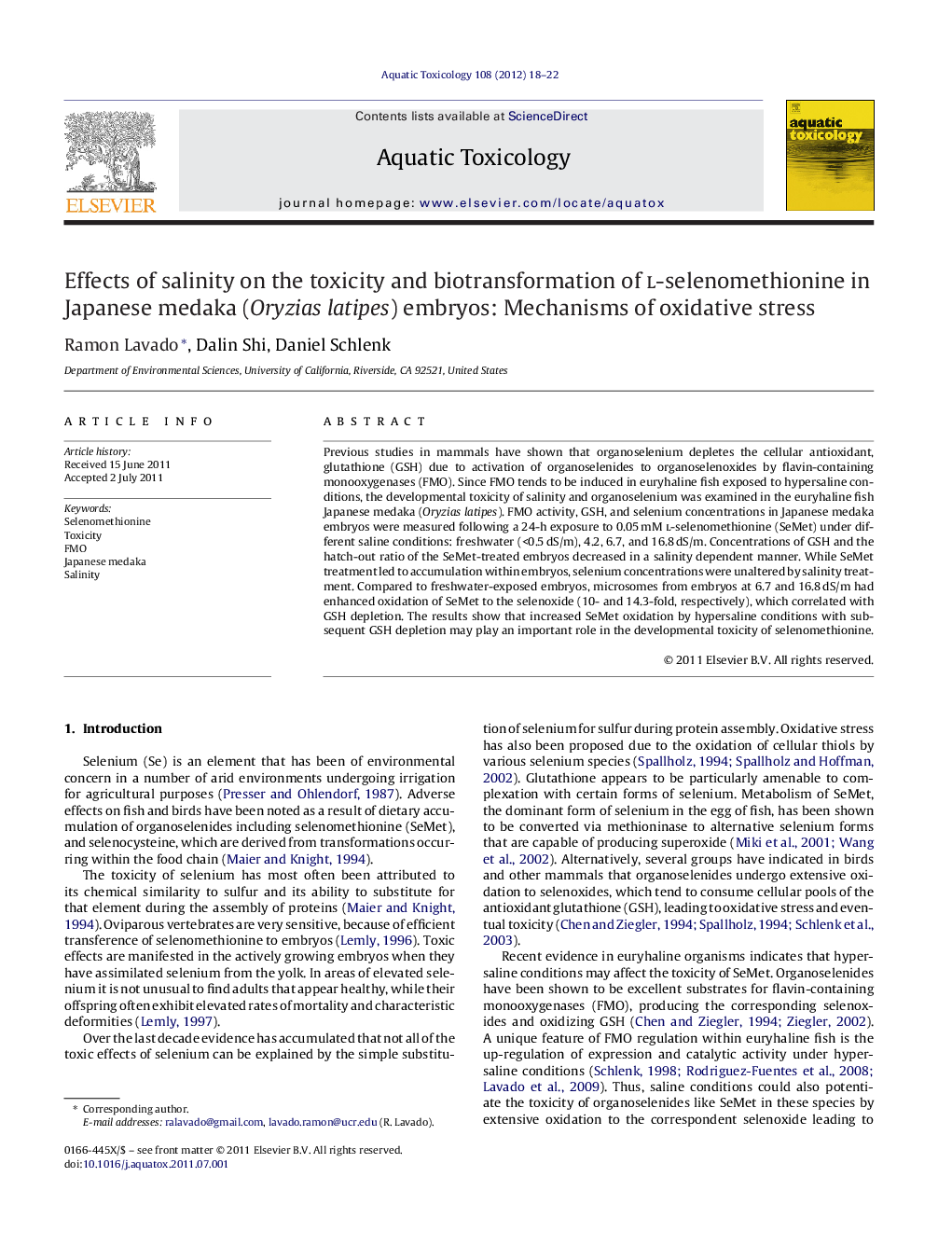| کد مقاله | کد نشریه | سال انتشار | مقاله انگلیسی | نسخه تمام متن |
|---|---|---|---|---|
| 4529908 | 1625980 | 2012 | 5 صفحه PDF | دانلود رایگان |

Previous studies in mammals have shown that organoselenium depletes the cellular antioxidant, glutathione (GSH) due to activation of organoselenides to organoselenoxides by flavin-containing monooxygenases (FMO). Since FMO tends to be induced in euryhaline fish exposed to hypersaline conditions, the developmental toxicity of salinity and organoselenium was examined in the euryhaline fish Japanese medaka (Oryzias latipes). FMO activity, GSH, and selenium concentrations in Japanese medaka embryos were measured following a 24-h exposure to 0.05 mM l-selenomethionine (SeMet) under different saline conditions: freshwater (<0.5 dS/m), 4.2, 6.7, and 16.8 dS/m. Concentrations of GSH and the hatch-out ratio of the SeMet-treated embryos decreased in a salinity dependent manner. While SeMet treatment led to accumulation within embryos, selenium concentrations were unaltered by salinity treatment. Compared to freshwater-exposed embryos, microsomes from embryos at 6.7 and 16.8 dS/m had enhanced oxidation of SeMet to the selenoxide (10- and 14.3-fold, respectively), which correlated with GSH depletion. The results show that increased SeMet oxidation by hypersaline conditions with subsequent GSH depletion may play an important role in the developmental toxicity of selenomethionine.
► Developmental toxicity of L-selenomethionine enhanced by salinity in fish embryos.
► Saline conditions induced FMO activity in fish embryos.
► L-selenomethionine enhanced oxidation to selenoxide by saline conditions.
► Enhanced oxidation of L-selenomethionine correlated with GSH depletion.
► Oxidative stress by consumption of intracellular GSH.
Journal: Aquatic Toxicology - Volume 108, February 2012, Pages 18–22